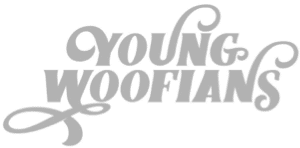We’ve talked before how important regular grooming is for you furry friend, how it helps to form a bond, create a tidier appearance but also to pick up any health problems you might otherwise miss. Dental care is not different and, after all, if it’s important for your to clean your teeth every day, why wouldn’t it be the same for your dog?
Why do I need to brush regularly?
There are some really key benefits to regular brushing:
- Clean, healthy teeth = much better breath!
- Dental complications can lead to other health issues for your dog such as heart problems
- Knowing what your dog’s teeth are usually like means that you will notice any changes and spot problems early
- Did you know that dental disease affects over 80% of cats and dogs so regular care can prevent your dog becoming one of these
- Dogs are great at hiding their pain and as it’s hard for them to communicate it’s up to you to look at for signs and symptoms and help them out
What does good look like?
So what does a healthy mouth look like?
- Healthy dog teeth should be clean and free of plaque and tartar (hard, scaly or sticky discolorations)
- Your dog’s 42 teeth should be intact and not jagged or broken.
- Their tongue should be moist — without any signs of lumps or cuts.
- In most cases, his gums should be salmon pink. Some dog breeds naturally have black or black-and-pink gums which can making looking for the usual signs of discoloration tricky. Make sure you know what your pet’s mouth usually looks like, and talk to your vet if you spot any lumps, raised spots, pale gums or bright red tissue.
How do I get brushing?
If brushing your dog’s teeth is new to the both of you, be sure to take baby steps. You want to get your dog comfortable with you touching his mouth and teeth first before you come at him with a toothbrush and toothpaste.
First, touch his muzzle and practice rubbing your finger along his teeth and gums. Once he can handle this — while staying calm and relaxed — introduce the toothbrush.
Let him smell the toothbrush and very gently rub it on his teeth. This process may take a few days for each step. Go slowly, and don’t rush your pet. After all, you don’t want him to develop anxious or negative feelings about this routine.
Once you’ve developed the trust needed for successful brushing, it’s time to work on technique. First, lift your dog’s lips and brush his front teeth. Slowly work your way to the back of his mouth, paying careful attention to the outside of his teeth. You may need to pull back at first and only do a few teeth at a time.
Once you’re both used to the process, you’ll find the routine quick and simple to complete. Dog toothpaste is also specially formulated to be as tasty as possible, as long as you like turkey and chicken better than minty freshness.
As ever, if you have any questions about how to apply Happy Tears or other staining problems that your dog has, please don’t hesitate to get in touch, we’d be happy to help.
Read more about Young Woofians, check out our reviews & testimonials or shop the range.







0 Comments